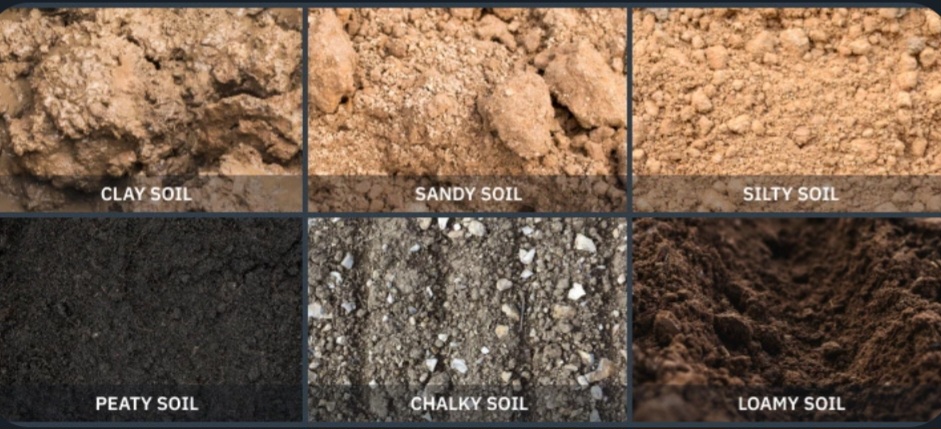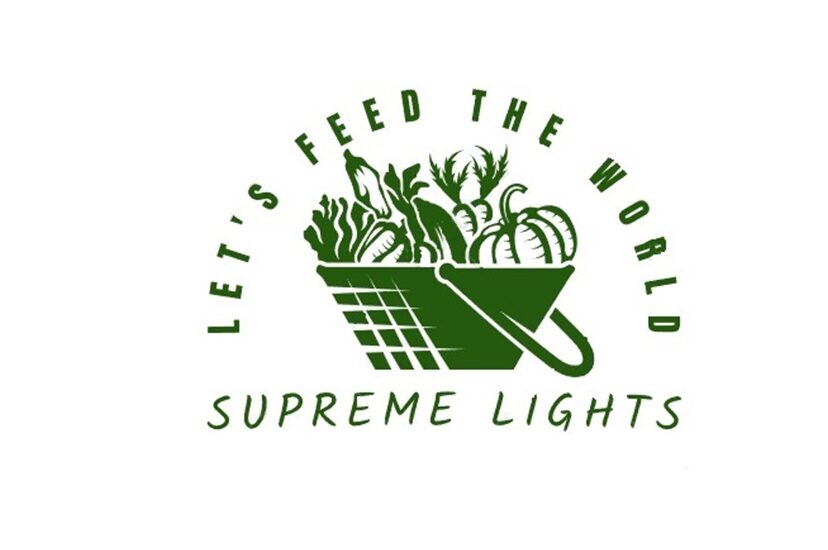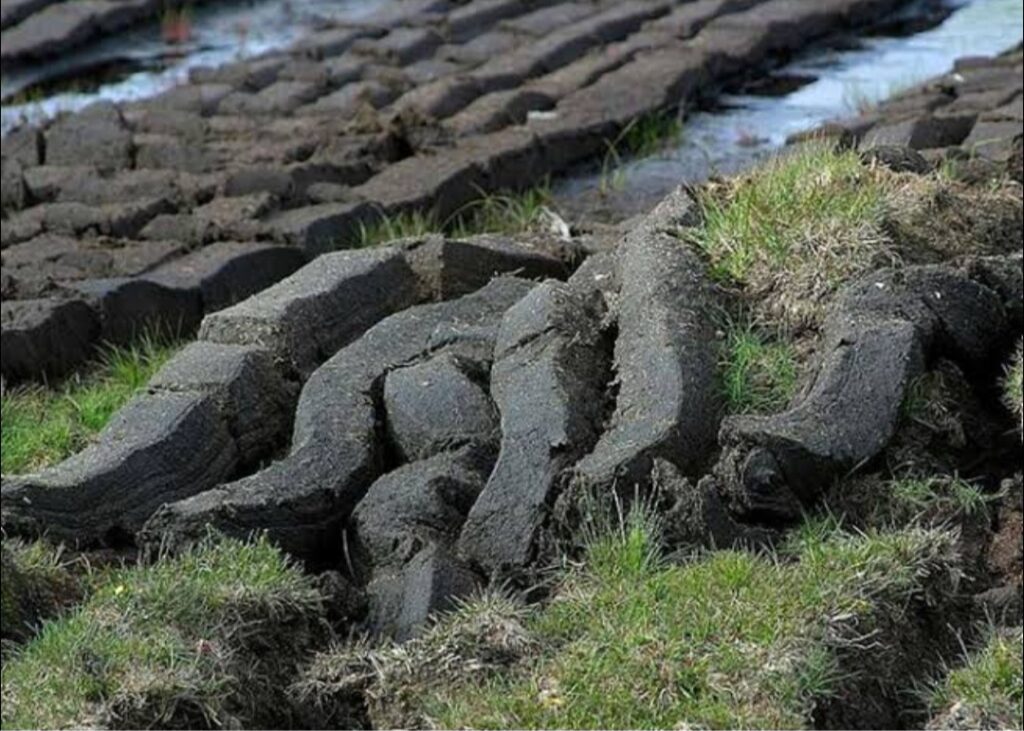
Peat is a brown spongy deposit resembling soil, formed by the partial decomposition of vegetable matter in the wet acidic conditions of bogs and fens, and often cut out and dried for use as fuel and in gardening. It is also refered to as accumulation of partially decomposed organic matter. These materials ( that is, organic matter or vegetable matter) are collected due to waterlogging, oxygen shortage, excessive acidity, and nutrient deficit.
Peat is only found in natural environments known as peatlands, bogs, mires, moors, or muskegs.
Peat and peat moss are atimes used to mean thesame thing. But the difference is that
peat moss is a specific type of peat that contains sphagnum moss. It is often used in potting soils, has a pH of 3.0–4.0, contain high amount of tannins and it also contains a mixture of organic materials, including moss, decaying plant matter, and dead insects.
Peat is formed in natural areas called peatlands, mires, moors, muskegs, and wetlands like bogs and swamps. It is made up of organic matter, mineral matter, and water. It is a major carbon sink that helps prevent global warming.
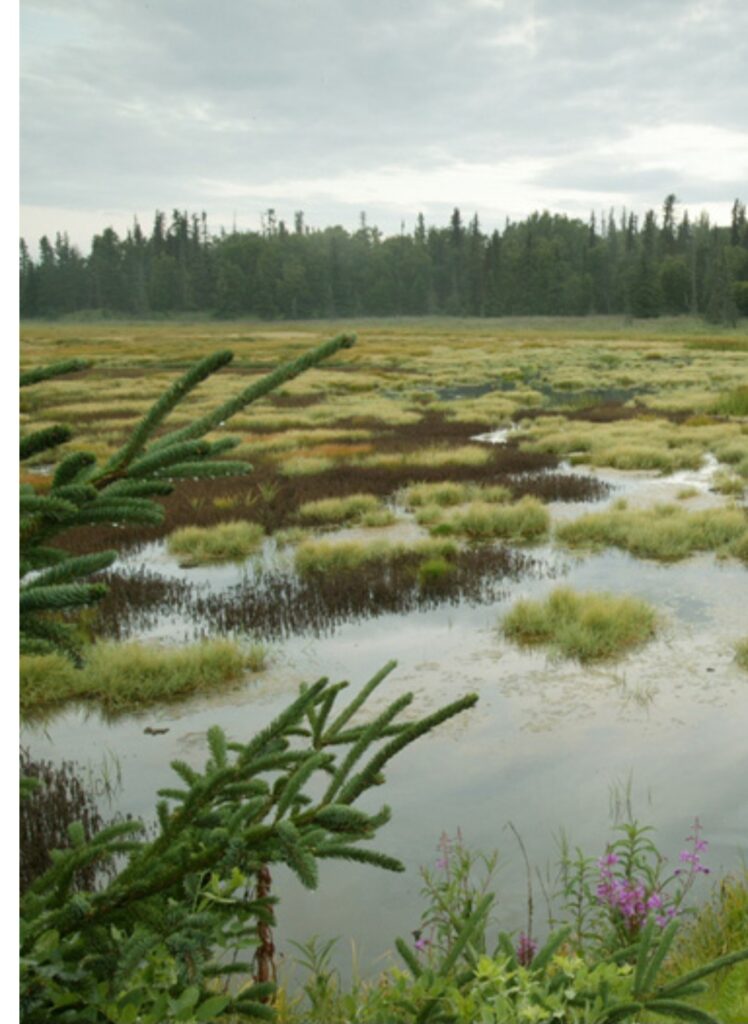
Soils consisting primarily of peat are known as histosols. Peat formed in wetland conditions, where flooding or stagnant water obstructs the flow of oxygen from the atmosphere, brings about a slow rate of decomposition of the materials.
Peatlands, particularly bogs, are the primary source of peat, although less common. Other wetlands including; fens, pocosins and peat swamp forests, also deposit peat. Landscapes covered in peat are home to specific kinds of plants, including Sphagnum moss, ericaceous shrubs and sedges. Peat properties such as organic matter content and saturated hydraulic conductivity can exhibit high spatial heterogeneity.
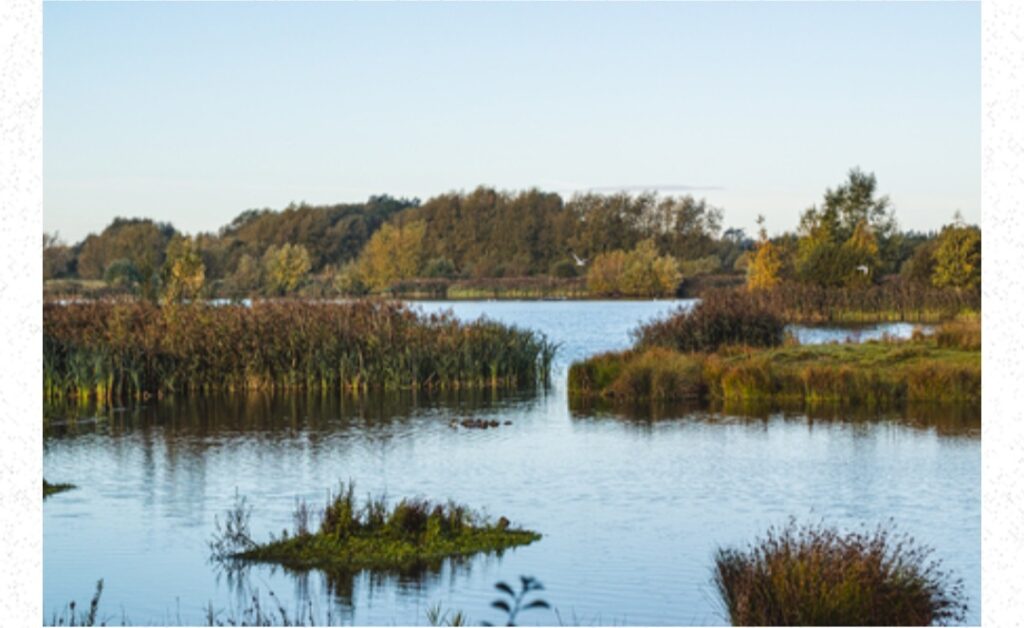
PEATLAND ECOSYSTEM
By volume, there are about 4 trillion cubic metres of peat in the world. The peatland ecosystem covers 3.7 million square kilometres (1.4 million square miles) and is the most efficient carbon sink on the planet, because peatland plants capture carbon dioxide (CO2) naturally released from the peat, maintaining an equilibrium. In natural peatlands, the “annual rate of biomass production is greater than the rate of decomposition”, but it takes “thousands of years for peatlands to develop the deposits of 1.5 to 2.3 m (4.9 to 7.5 ft), which is the average depth of the boreal (northern) peatlands”,which store around 415 gigatonnes (Gt) of carbon (about 46 times 2019 global CO2 emissions). Globally, peat stores up to 550 Gt of carbon, 42% of all soil carbon, which exceeds the carbon stored in all other vegetation types, including the world’s forests, although it covers just 3% of the land’s surface.
Apart from carbon production, peat is also a good source of energy. Peat is only a minor contributor to the world energy supply, but large deposits occur in Canada, China, Indonesia, Russia, Scandinavia, and the United States. In the early 21st century the top four peat producers in the world were Finland, Ireland, Belarus, and Sweden, and most of the major users of peat were these and other northern European countries. Peat is sometimes considered a “slowly renewable energy” and is classified as a “solid fossil” rather than a biomass fuel by the Intergovernmental Panel on Climate Change (IPCC). Although peat is not strictly a fossil fuel, its greenhouse gas emissions are comparable to those of fossil fuels.
IMPORTANCE AND USES OF PEAT
1. Economically, peat is important as a fuel source and raw material. It can be used as fuel once dried. Traditionally, peat is cut by hand and left to dry in the sun. In many countries, including Ireland and Scotland, peat are traditionally stacked to dry in rural areas and used for cooking and domestic heating. This tradition can be traced back to the Roman period.
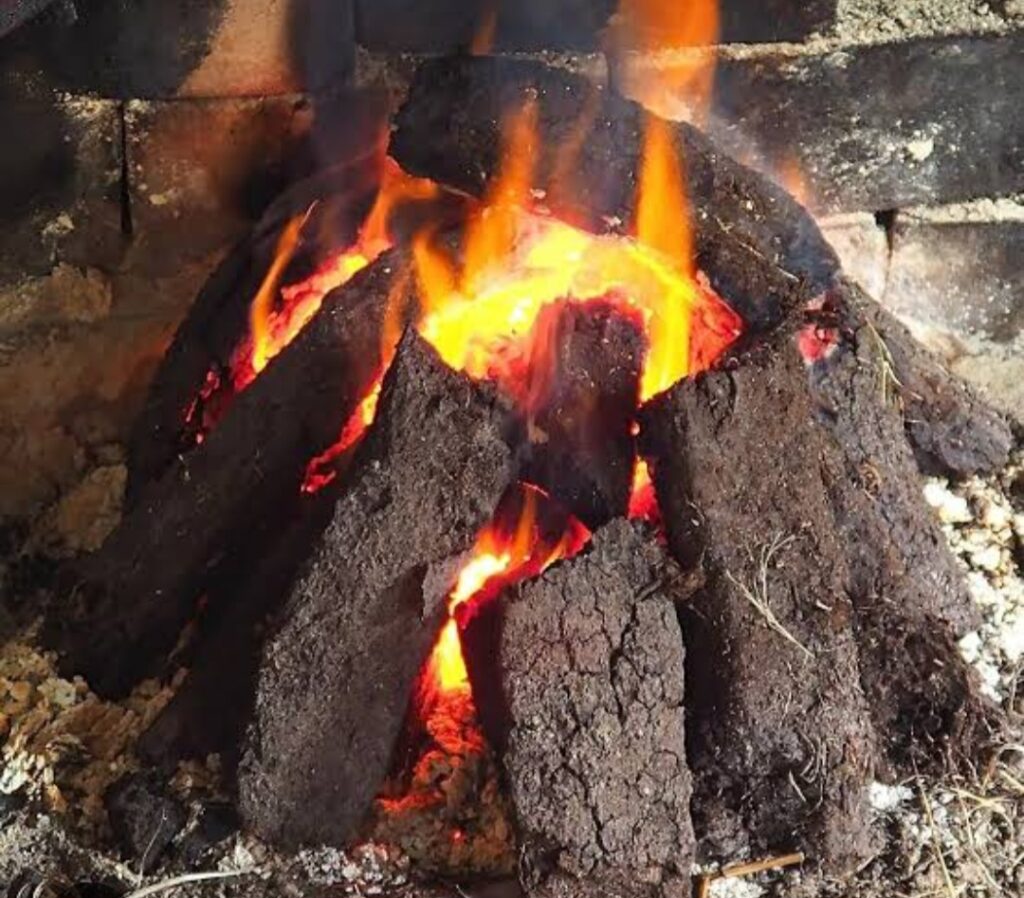
2. It is a common organic soil amendment. Never the less, it is discouraged as a soil amendment by the Royal Botanic Gardens in England, since 2003. While bark or coir-based peat-free potting soil mixes are on the rise, particularly in the UK, peat is still used as raw material for horticulture in some other European countries, Canada, as well as parts of the United States.
3. Peat moss is used in potting and garden soils to grow plants. It is used by gardeners and for horticulture in certain parts of the world, but this is being banned in some places.
4. It is also used in hydroponic gardening
5. Peat is a good growing medium for young plant roots
6. It can be used to manage soil pH. It can help neutralize alkaline soil
7. Peat moss is sterile, so it does not contain microorganisms, pathogens, and weed seeds.
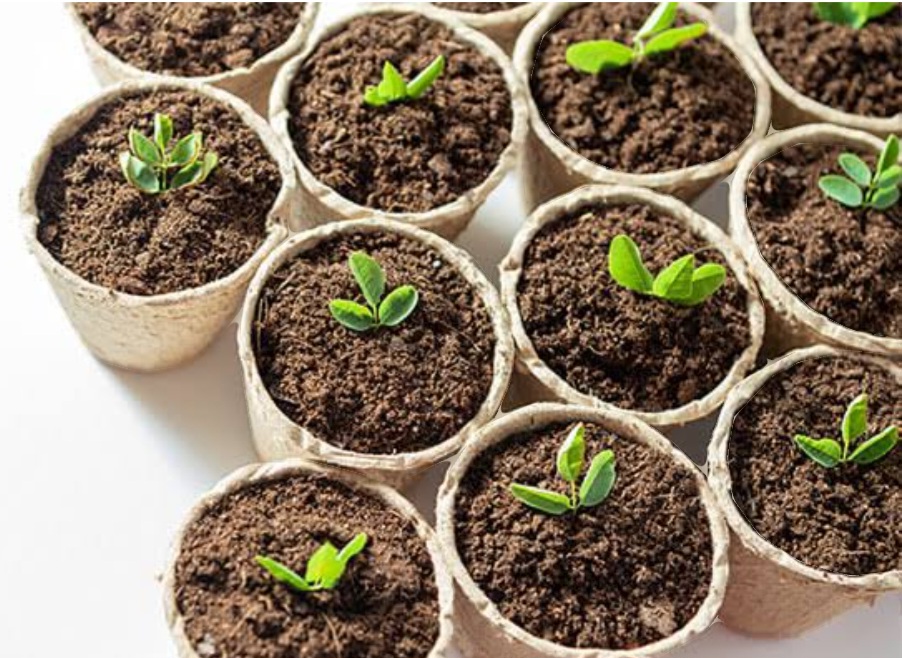
8. Because organic matter accumulates over thousands of years, peat deposits provide records of past vegetation and climate by preserving plant remains, such as pollen. This allows the reconstruction of past environments and the study of land-use changes.
9. WATER SOURCE: For industrial uses, companies do use pressure to extract water from the peat, which is soft and easily compressed.
10. In Sweden, farmers use dried peat to absorb excrement from cattle that are wintered indoors.
11. The most essential property of peat is retaining moisture in container soil when it is dry while preventing the excess water from killing roots when it is wet.
12. Peat can store nutrients although it is not fertile itself. It is polyelectrolytic with a high ion-exchange capacity due to its oxidized lignin.
13. Peatland can also be an essential source of drinking water, providing nearly 4% of all potable water stored in reservoirs. In the UK, 43% of the population receives drinking water sourced from peatlands, with the number climbing to 68% in Ireland. Catchments containing peatlands are the main source of water for large cities, including Dublin.
14. Peat is a prized natural habitat. It serves as a carbon sink, provides excellent animal habitats, aids in water management (it can hold up to 20 times its weight in water.), and preserves archaeological sites.
15. Peat is important for archaeology since peat maintains a record of former plants, landscapes, and people
16. Peat wetlands also used to have a degree of metallurgical importance in the Early Middle Ages. It is the primary source of bog iron used to create swords and armour
17. Paleoecological studies of peat can be used to reveal what plant communities were present in a locality and region, what period each community occupied the areas, how environmental conditions changed, and how the environment affected the ecosystem in that time and place.
18. In Finland, their climate favours bog and peat bog formation. Therefore, peat is in abundance and It is burned to produce heat and electricity. Peat provides around 4% of Finland’s annual energy production.
19. Mineral production: The formation of peat is the first step in the formation of coal. With increasing depth of burial and increasing temperature, peat deposits are gradually changed to lignite. With increased time and higher temperatures, these low-rank coals are gradually converted to subbituminous and bituminous coal and under certain conditions to anthracite.
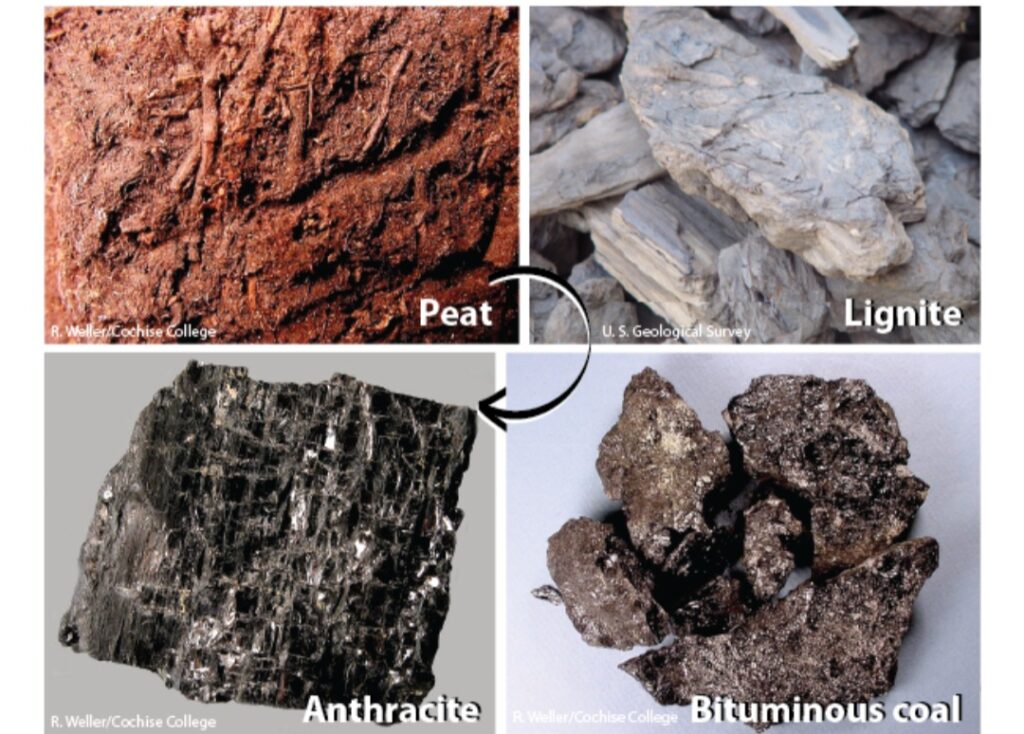
20. Peat soil may improve ventilation in organic soil mix and give plants’ roots more breathing space.
21. Apart from peat being used for domestic heating purposes, it also forms a fuel suitable for boiler firing in either briquetted or pulverized form.
22. In horticulture, peat is used to increase the moisture-holding capacity of sandy soils and to increase the water infiltration rate of clay soils.
23. It is also added to potting mixes to meet the acidity requirements of certain potted plants.
24. Peat can be used in water filtration and is sometimes utilized for the treatment of urban runoff, wastewater, and septic tank effluent.
25. It is also used to soften aquarium water and to mimic habitats for freshwater fish
25. Flood mitigation: Many peat swamps along the coast of Malaysia serve as a natural means of flood mitigation. Any overflow will be absorbed by the peat, provided forests are still present to prevent peat fires.
26. Peat has being reported to be soft and therefore suitable for demersal (bottom-dwelling) species such as Corydoras catfish. Peat has also being reported to have many other beneficial functions in freshwater aquaria. It softens water by acting as an ion exchanger, it also contains substances that are beneficial for plants and fishes’ reproductive health. Peat can prevent algae growth and kill microorganisms. Peat often stains the water yellow or brown due to the leaching of tannins.
27. Balneotherapy: Peat is widely used in balneotherapy (the use of bathing to treat disease). Many traditional spa treatments include peat as part of peloids. Such health treatments have an enduring tradition in European countries, including Poland, the Czech Republic, Germany and Austria. Some of these old spas date back to the 18th century and are still active today. The most common types of peat application in balneotherapy are peat muds, poultices and suspension baths.
28. Peat archives: Peat archives are the fossilized remains of plant and animal life, as well as archaeological artifacts, that are preserved in peat deposits. The fossilized changes occur for a very long time in which the vegetation, pollen, spores, animals (from microscopic to the giant elk), and archaeological remains are deposited in place by water, as well as pollen, spores and particles brought in by wind and weather. These remains are collectively termed the peat archives.
Peats are bioaccumulators of metals which concentrated in the peat. Accumulated mercury is of significant environmental concern. Scientists uses peat archieves to estimate and compare mercury (Hg) accumulation rates especially in bogs using natural archives records in peat bogs and lake sediments and also to estimate the potential human impacts on the biogeochemical cycle of mercury,
29. Bog bodies:
Naturally mummified human bodies are called “bog bodies”. These mummified human bodies are found in various places of Scotland, England, Ireland, northern Germany and Denmark. These bodies perfectly preserved by using tanning properties of the acidic water, as well as antibiotic properties of the organic component sphagnan. A famous example is the Tollund Man in Denmark discovered in 1950
Other Benefits of
Peat include:
30. Peat is used to prevent soil compaction
31. Peat soil is free of pathogens
32. Peat soil, as opposed to untreated compost, is a suitable choice for seed starting since it hardly includes hazardous microbes such as weed seeds or toxic bacteria.
33. Peat soil holds moisture. The organic elements in peat soil trap moisture, making it a helpful supplement for drier soil types like sandy soil.
34. Peat soil has an acidic pH:
Peat soil has a low pH and can enhance soil conditions in alkaline soils, particularly for plants that prefer more significant acidity levels, such as blueberries and azaleas.
PEAT MOSS
Sphagnum moss, also called peat moss, is one of the most common components and constituent of peat, although many other plants can contribute to peat formation. The biological features of sphagnum mosses act to create a habitat aiding peat formation, a phenomenon termed ‘habitat manipulation’.
Sphagnum peat moss is an aquatic plant that floats on the surface of waterways such as the edges of ponds. Over time it builds up a thick carpet of the stuff, providing growing space for other riparian plants, or plants that grow along the edge of water. As the peat plant matures, the older material dies but new peat grows on top. This leads to a thick layer of both dead and live peat moss.
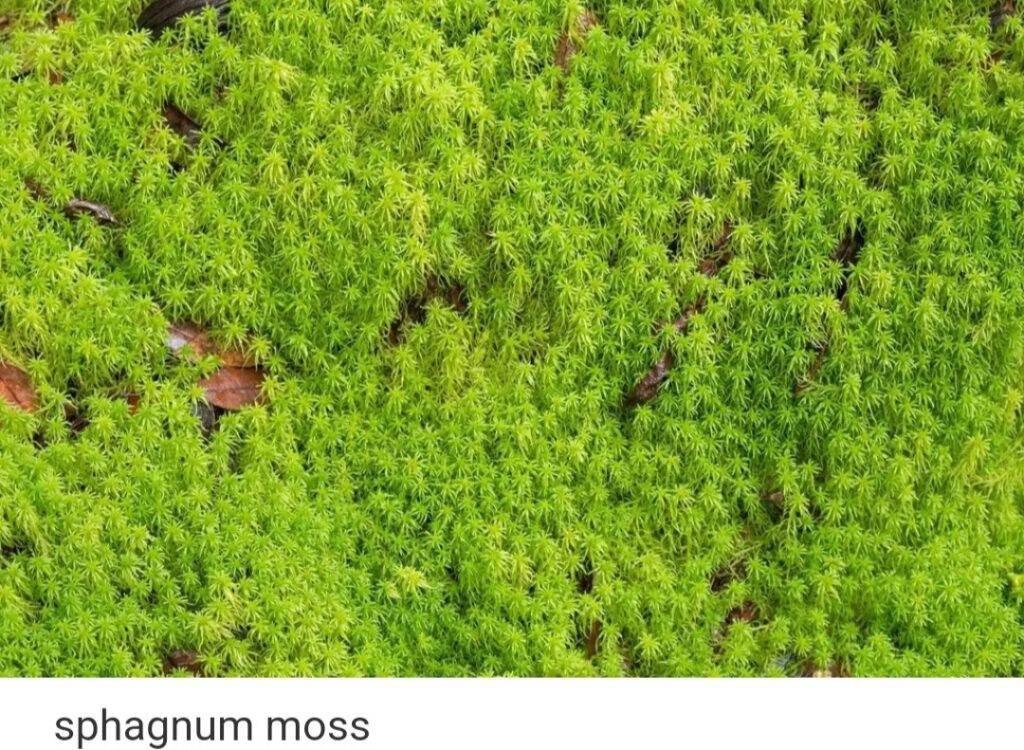
Peat moss can be harvested from bogs, fens, or peatlands and introduced into a water body to produce peat. The primary areas of the world where they are harvested is in Canada and Russia.
Peat moss are usually too acidic for non-acid-loving plants, they are non renewable and not sustainable, they lack nutrient content, attracts bugs such as fungus gnats when decaying and after it dries out, it takes a while to reabsorb water.
Peat moss is ideal for plants and fruits that require an acidic climate due to its low pH. Blueberries, heathers, azaleas, camellias, tomatoes, and other plants fall under this category.
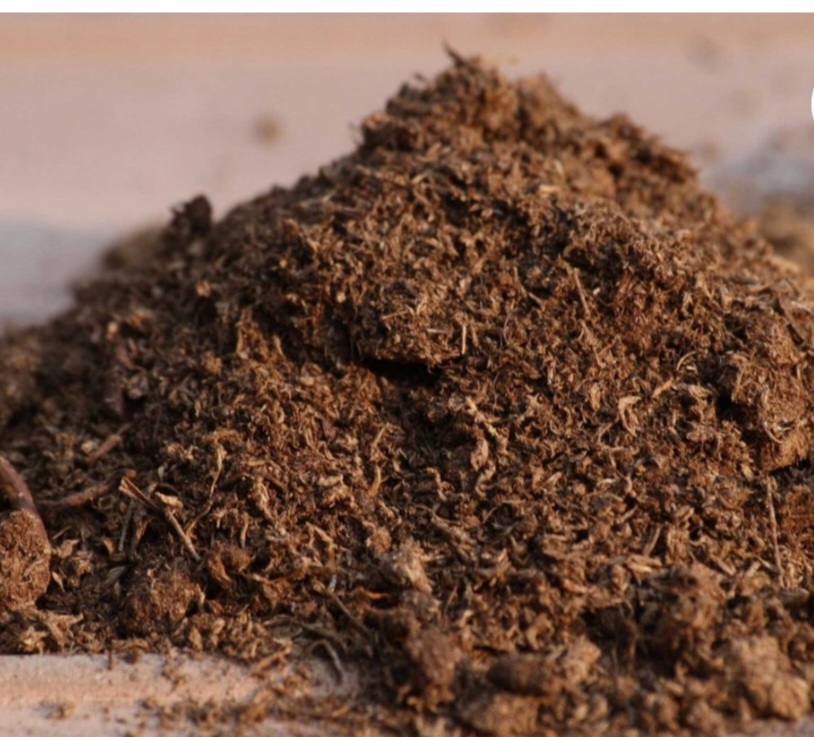
MATERIALS THAT DECOMPOSE TO FORM PEAT
PEAT materials accumulated under conditions of waterlogging, oxygen deficiency, high acidity and nutrient deficiency and decompose partially to form peat.
In temperate, boreal and sub-arctic regions, where low temperatures (below freezing for long periods during the winter) reduce the rate of decomposition, peat is formed mainly from bryophytes (mostly sphagnum mosses), herbs, shrubs and small trees.
In the lowland humid tropics, peat is derived mostly from rain forest trees (leaves, branches, trunks and roots) under near constant annual high temperatures.
In other geographical regions, peat can be formed from other species of plants that are able to grow in water-saturated conditions. For example, in New Zealand peat is formed from members of the Restionaceae while in tropical coastal fringes peat is formed in mangrove. New types of peat may still be found in other areas of the world
PEAT FORMATION
Over time, the formation of peat is often the first step in the geological formation of fossil fuels such as coal, particularly low-grade coal such as lignite.
It has being reported that Peat extraction rate in industrialized countries exceeds its slow regrowth rate of 1 mm (0.04 in) per year, and as it is also reported that peat regrowth takes place only in 30–40% of peatlands, this has resulted in loss of peat lands.
Apart from this, centuries of burning and draining of peat by humans has released a significant amount of CO2 into the atmosphere, and much peatland restoration is needed to help limit climate change.
“Peatification” is influenced by several factors, including the nature of the plant material deposited, the availability of nutrients to support bacterial life, the availability of oxygen, the acidity of the peat, and temperature. Peats are formed in wetlands and other places. Some wetlands result from rise in groundwater levels, whereas some elevated bogs are the result of heavy rainfall. Although the rate of plant growth in cold regions is very slow, this also result in very slow rate of organic matter decomposition. Plant material decomposes more rapidly in groundwater rich in nutrients than in elevated bogs with heavy rainfall. The presence of oxygen (aerobic conditions) is necessary for fungal and microbial activity that promotes decomposition, but peat is formed in waterlogged soils with little or no access to oxygen (anaerobic conditions), largely preventing the complete decomposition of organic material. All these are factors that affect peat formation.
Peat forms when plant material does not fully decay in acidic and anaerobic conditions. These plant materials are composed mainly of wetland vegetation, principally bog plants including mosses, sedges and shrubs. As the peats are formed, it accumulates and hold more water. This slowly creates wetter conditions that allow the area of wetland to expand. This peatification process do result in another process known as the hydrosere process. A hydrosere process, also known as hydrarch or aquatic succession, is the ecological succession that occurs in aquatic environments like ponds and lakes, gradually transforming a water body into a terrestrial ecosystem like a woodland, through the accumulation of sediments and organic matter, eventually leading to the establishment of land vegetation on the previously open water area. It is essentially the process of a water body filling in and becoming land over time. Hydrosere process begins in open water and progresses through fen phases impacted by nutrient-rich groundwater (and rainfall) to a bog that obtains nutrients and water supplies exclusively from rainfall.
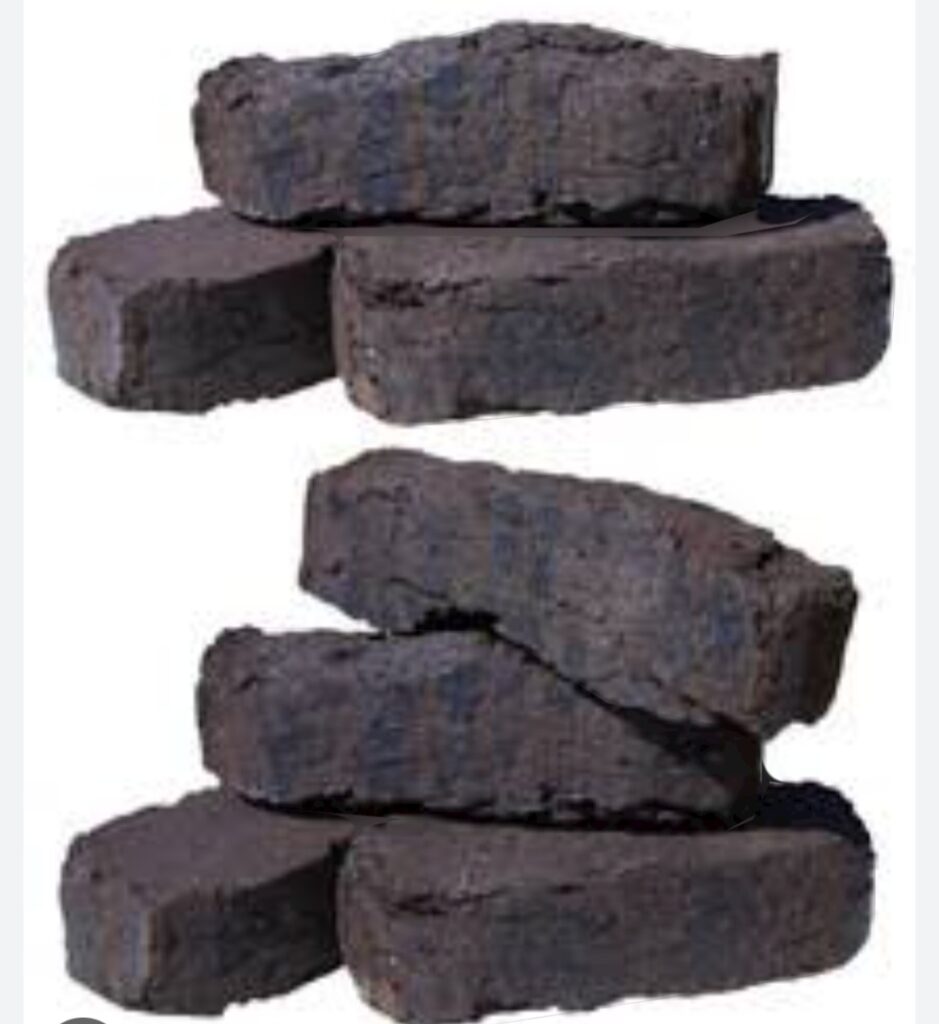
FEATURES OF PEAT LANDS
1. Peatland features can include ponds, ridges and raised bogs.
2. Some bog plants are characterised to actively promote bog formation. For example, sphagnum mosses actively secrete tannins, which preserve organic material.
3. Sphagnum also have special water-retaining cells, known as hyaline cells, which can release water ensuring the bogland remains constantly wet which helps promote peat production.
4. Peat usually accumulates slowly at the rate of about a millimetre per year.
5. Peat land is characterized by the accumulation and store of dead organic matter from Sphagnum and many other non-moss species under conditions of almost permanent water saturation.
6. Peatlands are adapted to the extreme conditions of high water and low oxygen content, of toxic elements and low availability of plant nutrients.
7. The peatland and peat water chemistry varies from alkaline to acidic.
8. Peat material is either fibric, hemic, or sapric. Fibric peats are the least decomposed and consist of intact fibre. Hemic peats are partially decomposed and sapric are the most decomposed.
9. Phragmites peat are composed of reed grass, Phragmites australis, and other grasses. It is denser than many other types of peat.
10. Engineers may describe a soil as peat which has a relatively high percentage of organic material. This soil is problematic because it exhibits poor consolidation properties. It cannot be easily compacted to serve as a stable foundation to support loads, such as roads or buildings.
ENVIRONMENTAL AND ECOLOGICAL ISSUES PERTAINING TO PEAT AND PEAT LANDS
1. The Ecological conditions of peat wetlands is conducive as an habitat for fauna and flora. For example, some crane nests are found in aboundance in several peat wetland areas like whooping cranes nest in North American peatlands and Siberian cranes nest in the West Siberian peatland. Palsa mires have a rich bird life. In Canada, riparian peat banks are used as maternity sites for polar bears. Natural peatlands also have many species of wild orchids and carnivorous plants.
2. Around half of the area of northern peatlands is permafrost ( A ground that remains frozen for at least two years, and is made up of soil, sand, rocks, and ice. It’s found in cold climates, like the Arctic and the poles)-affected, and this area represents around a tenth of the total permafrost area, and also a tenth (185 ± 66 Gt) of all permafrost carbon, equivalent to around half of the carbon stored in the atmosphere. Dry peat is a good insulator (with a thermal conductivity of around 0.25 Wm−1K−1) and therefore plays an important role in protecting permafrost from thaw. The insulating effect of dry peat also makes it integral to unique permafrost landforms such as palsas and permafrost peat plateaus.
Peatland permafrost thaw tends to result in an increase in methane emissions and a small increase in carbon dioxide uptake, meaning that it contributes to the permafrost carbon feedback.
Under 2 °C global warming, 0.7 million km2 of peatland permafrost could thaw, and with warming of +1.5 to 6 °C a cumulative 0.7 to 3 PgC of methane could be released as a result of permafrost peatland thaw by 2100. The forcing from these potential emissions would be approximately equivalent to 1% of projected anthropogenic emissions.
3. Peat is usually hand-cut, although progress has been made in the excavation and spreading of peat by mechanical methods. Peat may be cut by spade in the form of blocks, which are spread out to dry. When dry, the blocks weigh from 0.34 to 0.91 kg (0.75 to 2 pounds). In mechanized method, a dredger or excavator digs the peat from the drained bog and delivers it to a macerator (a device that softens and separates a material into its component parts through soaking), which extrudes the peat pulp through a rectangular opening. The pulp is cut into blocks, which are spread to dry. Maceration tends to yield more uniform shrinkage and a denser and tougher fuel. Hydraulic excavating can also be used, particularly in bogs that contain roots and tree trunks. The peat is washed down by a high-pressure water jet, and the pulp runs to a sump. There, after slight maceration, it is pumped to a draining ground in a layer, which, after partial drying, is cut up and dried further.
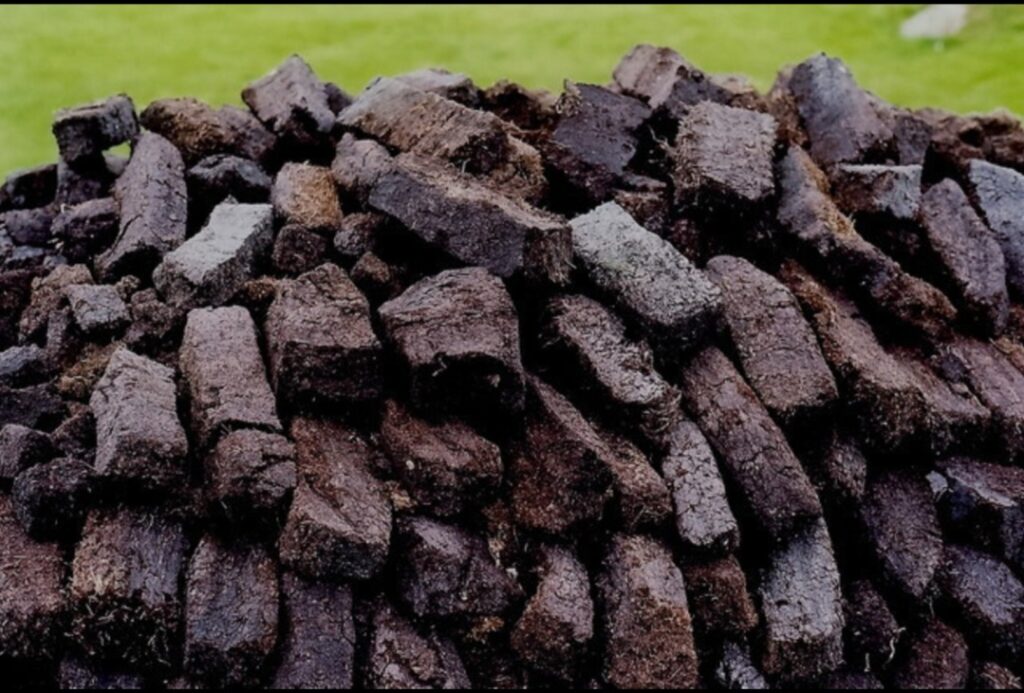
CLASSIFICATION OF PEATS
According to the U.S. Department of Agriculture Soil Classification, peat is an organic soil (Histosol) that contains a minimum of 20% organic matter increasing to 30% if as much as 60% of the mineral matter is clay. Other authorities have adopted definitions of peat with organic matter content higher than 30% and thickness greater than 30cm.
The types of peats are classified based on the following:
A. Types of peats based on the various layers formed.
Several types and grades of peat are available. The features of peat are determined by factors such as the depth, the extraction technique, and the peat location’s meteorological conditions. Here are the six peat types described below:
1. UPPER PEAT LAYER
The peat’s upper layer is the peat profile’s first ten inches. It is mostly alive and comprises of tall stems of sphagnum moss. Water flows readily through this zone. The top layer of peat has the drawback of not necessarily being homogeneous in the constitution.
2.. PEAT LITTER
Also known as peat dust, it is the unsheathed upper sheet of the peat profile. The result is pale brown and just slightly degraded. It can hold at least eight times its weight in water. The release of water and absorption is slower in this peat than in sphagnum peat moss. Peat litter comes in three sizes: coarse, fine, and normal. Its grade is determined by the extraction process utilised.
3. SPHAGNUM PEAT MOSS
Sphagnum peat moss is a novel, partly decayed sphagnum moss that holds 10-12 times its mass in water. With a pale hue, it is nearly entirely composed of several varieties of sphagnum moss. Since sphagnum peat moss is a comparatively newer organic substance, it degrades faster than older peat varieties. Sphagnum peat moss is currently the most common peat in high-quality potting mixes.
4. NON-PERMAFROST BLACK PEAT
Also referred to as champ peat, old peat, and casing soil peat, this peat type is not ideal for potting soil because it significantly shrinks when dried and has lower retention qualities. It creates pressed peat or hard peat used as fuel when properly dried.

5. COLOURED PEAT
Also called grey peat, it derives from the sheet between the black and white layers of peat. This level has decayed more than the white layer, and its hue lies between black and white peat. They hold less water than peat litter and sphagnum moss peat.
6. GARDEN PEAT
It is an essential source of potting soil and is made by freezing, moist black peat. The frozen state of the garden peat determines its quality. Freezing the black peat increases its water-retaining properties and decreases its shrinking properties.
After drying, garden peat may absorb at least four times its weight in water. Being dark brown in colour indicates that it has proceeded to an advanced level of decomposition. It has lower air content since it is made up of very small particles.
B. Peats may be divided into several types based on their macroscopic, microscopic, and chemical characteristics. These types include:
1. fibric,
2. coarse hemic,
3. hemic,
4. fine hemic, and
5. sapric,
Peat may be distinguished from lower-ranked coals on the basis of four characteristics:
1. Peats generally contain free cellulose, more than 75 percent moisture,
2. Peats containing free cellulose less than 60 percent carbon,
3. Peats that can be cut with a knife.
4. The transition of peat to brown coal which takes place slowly and is usually reached at depths ranging from 100 to 400 metres (approximately 330 to 1,300 feet).
These lower-rank coals include; lignite and subbituminous coal.
OVER EXPLOITATION OF PEATLANDS
For generations, peatlands have been under threat. They are either drained to create a place for fertile grazing and agriculture, or they are damaged by peat extraction for electricity. When peatlands are drained, their peat is exposed to air and emits carbon dioxide 20 times quicker than sequestered.
PEATLAND RESTORATION, PROTECTION, MANAGEMENT AND REHABILITATION.
Different forms of management are used to conserve peats and peatland and this management might provide different results. Grazing and burning, for example, may play a beneficial role in the long-term management of peatlands maintained for nature. However, drainage and peat cutting can have a substantial influence on peatlands, resulting in irreversible damage to the peatland site.
Another management practices used for peat and peatland is conservation practices. Peatland conservation begins with site hydrology management, which helps to limit greenhouse gas emissions such as carbon dioxide. Depending on the starting point, peatland areas may require drain blockage to rewet them, utilising several techniques such as peat dams, plastic piling and bunding, plantation removal, pollution management, sphagnum transfer, and/or control of grazing, burning, water quantity and quality.
In the case of restoration of already degraded peatlands,
peatland restoration can be done by blocking drainage channels in the peatland, and allowing natural vegetation to recover.
Rehabilitation projects undertaken in North America and Europe usually focus on the rewetting of peatlands and revegetation of native species. This acts to mitigate carbon release in the short term before the new growth of vegetation provides a new source of organic litter to fuel the peat formation in the long term.
NEGATIVE EFFECTS OF PEAT IN THE ENVIRONMENT
1. Mass volumes of stored carbon dioxide are released when peat is harvested, contributing to greenhouse gas levels.
2. Peat are banned in certain areas. Peat must be moist to be healthy and operate properly. Its exploitation for human use, dries the peat, causing the environment to deteriorate.
3. PEAT DRAINAGE:
Large areas of organic wetland (peat) soils are currently drained for agriculture, forestry and peat extraction (i.e. through canals) purposes. This process is taking place all over the world. This not only destroys the habitat of many species but also result in heavy fuels climate change. As a result of this peat drainage, organic carbon built for thousands of years underwater is suddenly exposed to the air. This result in the organic matter decompositon, turning it into carbon dioxide (CO2), which is released into the atmosphere. Thus, resulting in climate change.
The global CO2 emissions from drained peatlands have increased from 1,058 Mton in 1990 to 1,298 Mton in 2008 (a 20% increase) and still continue to increase till date. This can be noticed in developing countries like Indonesia, Malaysia and Papua with New Guinea being the fastest-growing top emitters. This estimate excludes emissions from peat fires (conservative estimates amount to at least 4,000 Mton/CO2-eq./yr for south-east Asia). With 174 Mton/CO2-eq./yr, the EU is after Indonesia (500 Mton) and before Russia (161 Mton), the world’s second-largest emitter of drainage-related peatland CO2 (excl. extracted peat and fires). Total CO2 emissions from the worldwide degradation of peatland may exceed 2.0 Gtons (including emissions from peat fires), which is almost 6% of all global carbon emissions. With this, climate change and greenhouse gas emissions increases.
4. PEAT FIRES: Peat can be a major fire hazard and cannot be extinguished by light rain. Peat fires may burn for great lengths of time, or smoulder underground and reignite after winter in temperate region or during hammattan in tropical region if an oxygen source is present.

Peat has a high carbon content and can burn under low moisture conditions. Once ignited by the presence of a heat source (e.g., a wildfire penetrating the subsurface), it smoulders. These smouldering fires can burn undetected for very long periods of time (months, years, and even centuries) propagating in a creeping fashion through the underground peat layer.
Despite the damage that the burning of raw peat can cause, bogs are naturally subject to wildfires. These wildfires can keep competitive woody plants from lowering the water table and shading out many bog plants. Several families of plants including the carnivorous Sarracenia (trumpet pitcher), Dionaea (Venus flytrap), Utricularia (bladderworts) and non-carnivorous plants such as the sandhills lily, toothache grass and many species of orchid in the bog becomes threatened and in some cases become endangered from the combined forces of human drainage, negligence and absence of fire.
Most wildfires occurring in countries all over the world like
the recent burning of peat bogs in Indonesia, the 1997, peat and forest fires in Indonesia, peat fires in Kalimantan and East Sumatra, peat fires in North America from boreal forests in Canada to swamps and fens in the subtropical southern Florida Everglades etc result in destruction of wetland and wildlife resources.
These burning result in burning of hollows in the peat, hummocks desiccated which contribute to Sphagnum recolonization. Thousands of houses are burnt like the high heat wave that occur from Central Russia to the capital of Moscow with a toxic smoke blanket during the 2010 summer period.
These peat fires are linked to climate change, as they are much more likely to occur nowadays due to this effect.
5. EROSION (PEAT HAGS)
Peat “hags” are a form of erosion that occur at the sides of gullies that cut into the peat. They sometimes also occur in isolation. Hags may result when flowing water cuts downwards into the peat and when fire or overgrazing exposes the peat surface. Once the peat is exposed in these ways, it is prone to further erosion by wind, water and livestock. The result is overhanging vegetation and peat. Hags are too steep and unstable for vegetation to establish itself, so they continue to erode unless restorative action is taken.
6. PROTECTION: The United Nations Convention on Biological Diversity highlights peatlands as key ecosystems to be conserved and protected. The convention requires governments at all levels to present action plans for the conservation and management of wetland environments. Wetlands are also protected under the 1971 Ramsar Convention.
In June 2002, the United Nations Development Programme launched the Wetlands Ecosystem and Tropical Peat Swamp Forest Rehabilitation Project. This project was targeted to last for five years, and brings together the efforts of various non-government organisations.
In November 2002, the International Peatland (formerly Peat) Society (IPS) and the International Mire Conservation Group (IMCG) published guidelines on the “Wise Use of Mires and Peatlands – Backgrounds and Principles including a framework for decision-making”. This publication aims to develop mechanisms that can balance the conflicting demands on the global peatland heritage to ensure its wise use to meet the needs of humankind.
In June 2008, the IPS published the book Peatlands and Climate Change, summarising the currently available knowledge on the topic. In 2010, IPS presented a “Strategy for Responsible Peatland Management”, which can be applied worldwide for decision-making
